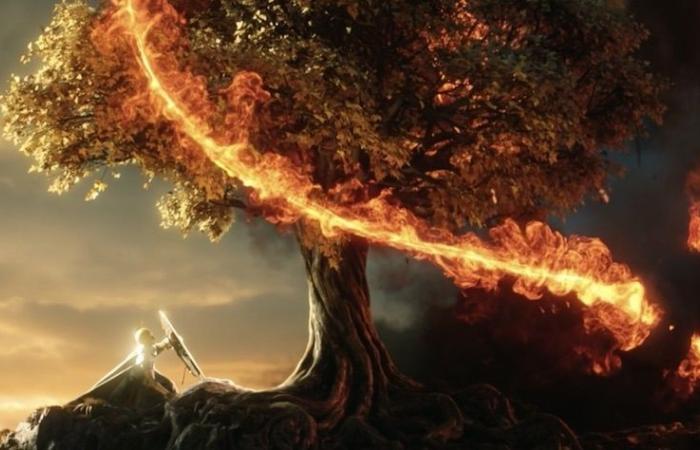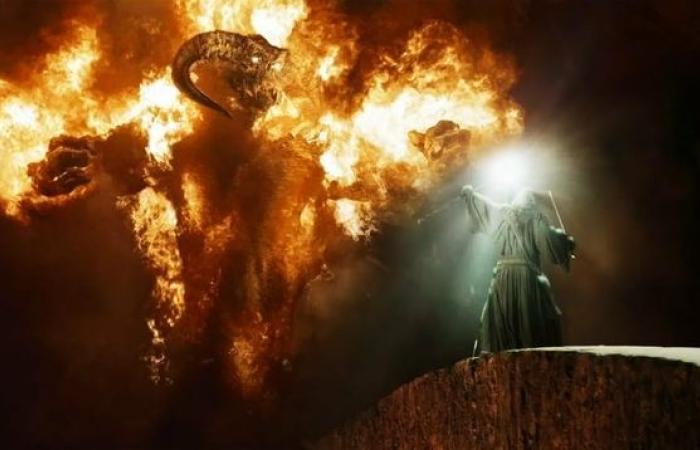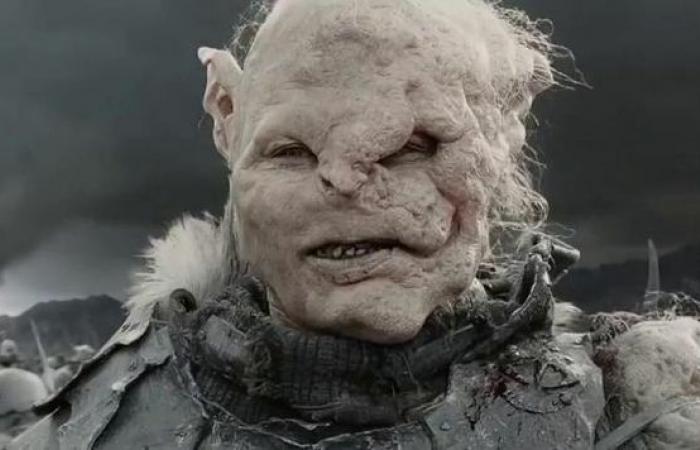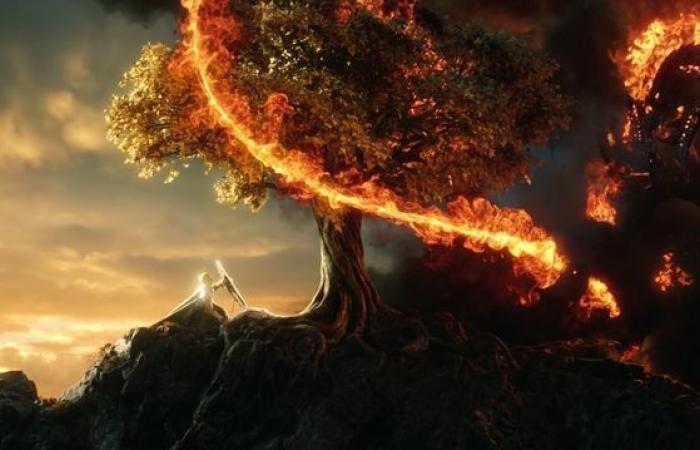Episode 5 of The Rings of Power introduced us to a handsome Balrog, but may also have spoiled a great scene from The Silmarillion.
WARNING, MINI-SPOILERS FOR EPISODE 5
It’s a key moment in episode 5 of the Lord of the Rings: The Rings of Power : the flashback featuring an epic fight between a glorious Elven warrior and a big Balrog. And it’s true, it’s a very nice moment… as well as a probable clumsy adaptation (in any case, not assumed) of a very long sequence from the Silmarillion, the one featuring the most powerful of all the Balrogs. Explanations of this (probable) mess, and a short summary of what a Balrog is in the world of JRR Tolkien.
Here is a Balrog
WHAT IS A BALROG
We have already explained it a thousand times, but as Rings of Power is to say the least quite messy in the exposition of its mythology, we are going to add a layer of it for the most profane. The world of Arda was created by an almighty God called Eru Illuvatar. He also created the Ainur, a collection of more or less powerful spirits. The most important of these became the Valar, a pantheon of a dozen major deities who reside on the continent of Aman, far west of Arda and Middle-earth. The other Ainur, less powerful, are called Maiar.
While all Valar and all Maiar are born good, not all remain so. Thus the arch-villain of Tolkien’s universe, Melkor/Morgoth, is a Valar who has rebelled against the will of Eru Illuvatar and seeks to undo his world. Sauron, his most trusted lieutenant, is himself a Maiar corrupted by Morgoth. And the Balrogs in all this? Well, just as wizards are Maiar who remained loyal to the Valar and Eru, so Balrogs are Maiar who joined Morgoth. Sauron, Balrog, Gandalf, Saruman, Radagast, same nature therefore: all Maiar (be careful, this does not mean that their powers are similar).

This is also why the fight between Gandalf and the Balrog of Moria is such an important and tragic moment: Gandalf confronts and slays there not a beast servant of Evil like a basic orc, but one of his kind. Some Balrogs followed Melkor from his first act of rebellion, others joined him later, and they are described as beings enveloped in fire and darkness, but the satanic diabolico interpretation of Peter Jackson with the horns is in rather free reality, Tolkien remaining much more abstract. In contrast, the fire whip is effectively their trademark in the Source material, and the swords are also in the canon.
Tolkien describes the Balrogs (also called Valaraukar) as the most powerful servants of Morgoth (after Sauron and some dragons) and it should be understood that they are not beasts, but sentient beings, although corrupted until to the marrow. There is therefore a hierarchy in the Balrogs, and although almost no details are available, the fact remains that the Silmarillion talks about a lord of the Balrogs named Gothmog. Gothmog is a Balrog himself, and he has a very large kill count.
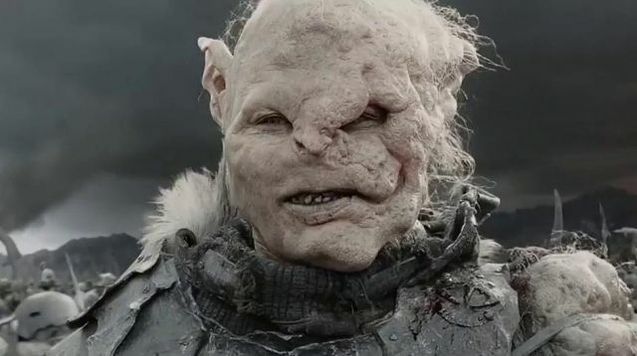

WHAT RELATION TO AMAZON
If the appearance of a Balrog remains an exceptional fact in the Second Age (and a fortiori in the Third Age), they were literally legion during the years which preceded, and Gothmog led them in battle against the most powerful Elf leaders. It was Gothmog himself who killed the great Elf hero Fëanor, creator of the Silmarils. Gothmog also killed two high-kings of the Elves, Fingon (struck “until it turns to dust” in the text, like what Tolkien can also be violent), then much later, Ecthelion, during a duel. But it’s more likely that Amazon was inspired by a fourth scene, with a Balrog that isn’t Gothmog.
Indeed, the decor of the flashback of episode 5 is rather reminiscent of a duel which opposed a Balrog to the Elf hero Glorfindel. A more heroic episode for an Elf character much more iconic than the previous two… and who could have a significant role to play in Rings of Power. During the First Age, Glorfindel witnesses the fall of the capital city of Gondolin, a huge tragedy in the history of the Elves. As the survivors attempt to flee, they are ambushed by orcs, led by a Balrog. If an intervention of the Eagles makes it possible to retain the orcs, Glorfindel listens only to his courage and opposes the Balrog, all alone.
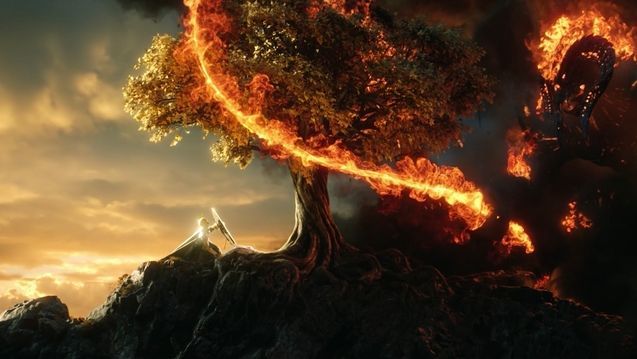

As Glorfindel delivers the killing blow and the Balrog falls down the precipice they were fighting on, the creature grabs Glorfindel by the hair, and the two die. A scene forever etched in the memory of the Elves… but which has only remotely to do with the scene described by Amazon in episode 5 you will tell us. And it’s normal: the latter is simply invented as well as the origin and the properties of mithril which result from it.
However, it is difficult not to make the connection, especially since, as a reminder, Amazon does not have the right to adapt directly Le Silmarillion. So it would be a way to make a roundabout loan, without seeming to do so… but which results in these bizarre and wobbly thirty seconds.
Incidentally, in Tolkien’s text, Glorfindel returns to Middle-earth during the Second Age, somewhere in the vicinity of the events told by the Rings of Power. From there to say that we could have been hinted at the future appearance of this character, there is only one step. Finally, remember that the plans of the Balrog of the trailer of the Rings of Power weren’t used in Episode 5, so it’s quite likely we won’t be done seeing them. And so much the better, because this single appearance at the limit of fan service left a tad to be desired.

